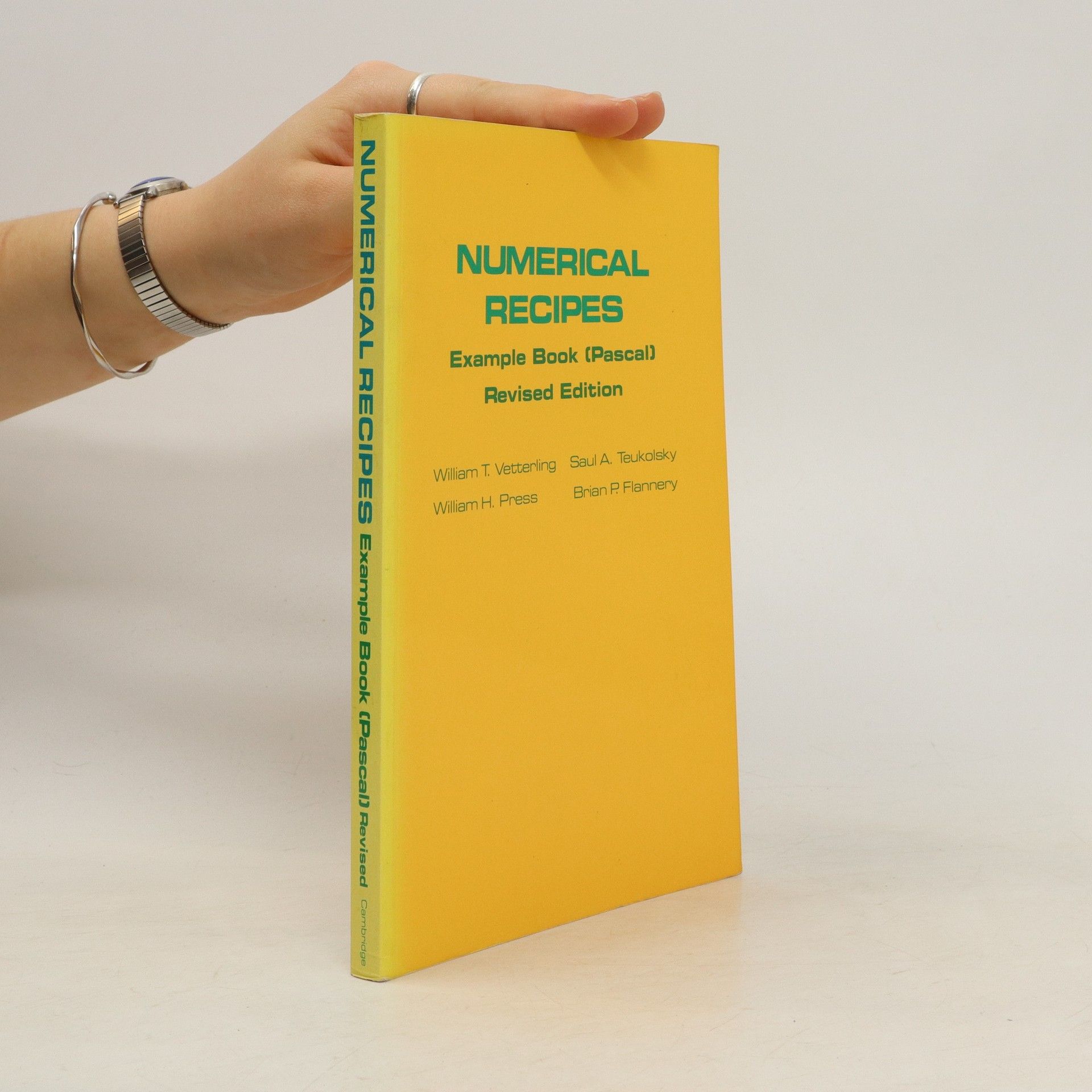This book aims to teach the methods of numerical computing, and as such it is a practical reference and textbook for anyone using numerical analysis. The authors provide the techniques and computer programs needed for analysis and also advice on which techniques should be used for solving certain types of problems. The authors assume the reader is mathematically literate and is familiar with FORTRAN and PASCAL programming languages, but no prior experience with numerical analysis or numerical methods is assumed. The book includes all the standard topics of numerical analysis (linear equations, interpolation and extrapolation, integration, nonlinear rootfinding, eigensystems and ordinary differential equations). The programs in the book are in ANSI-standard FORTRAN-77 for the main text, and are repeated in UCSDPASCAL at the end. They are available on discs for use on IBM-PC microcomputers and their compatibles. A workbook providing sample programs that illustrate the use of each subroutine and procedure is available, as well as discs giving programs listed in the book in USCD-PASCAL and FORTRAN-77 for use on IBM-PC microcomputers and their compatibles.
William H. Press Livres




Numerical Recipes: example book (Pascal)
- 231pages
- 9 heures de lecture
Designed to accompany Numerical Recipes in Pascal the example book provides listings of demonstration programs (source code) that illustrate the use of each Pascal procedure found in the main book. This book will be a valuable aid to users wishing to incorporate Pascal programs into their own applications programs and to conduct simple validation tests. The programs found in this book are different from the original example book in Pascal (which will be phased out). Furthermore, they are not compatible with the Pascal programs found in the appendix of the original (FORTRAN) version of Numerical Recipes. The Pascal appendix is being dropped from the FORTRAN book with the publication of Numerical Recipes in Pascal. The revised example diskette contains the machine-readable source code for the programs found in the revised example book. (It only contains the programs; it does not contain any text found in the book.) N.B. The diskette that accompanies the revised example book replaces the extant Numerical Recipes Example Diskette (Pascal). The revised diskette is only compatible with the programs listed in the revised example book.
Numerical Recipes in FORTRAN 77
Volume 1, Volume 1 of FORTRAN Numerical Recipes: The Art of Scientific Computing
- 1010pages
- 36 heures de lecture
The revised and expanded second edition of this well-regarded work offers comprehensive insights into scientific computing techniques. It includes updated algorithms, practical examples, and enhanced explanations, making it an essential resource for students and professionals in the field. The book emphasizes the art of programming and problem-solving, ensuring readers can effectively apply numerical methods to real-world challenges.
Numerical Recipes in FORTRAN 90
Volume 2, Volume 2 of FORTRAN Numerical Recipes: The Art of Parallel Scientific Computing
- 578pages
- 21 heures de lecture
Focusing on the concept of "thinking parallel," this guide offers a comprehensive approach to understanding parallel programming principles. It includes practical "parallel hints" and specific "Fortran 90 tips," highlighting the language's significance as a modern update to Fortran. The book emphasizes its relevance in the context of multiprocessor computers and the growing field of parallel programming, making it an essential resource for learners and practitioners alike.